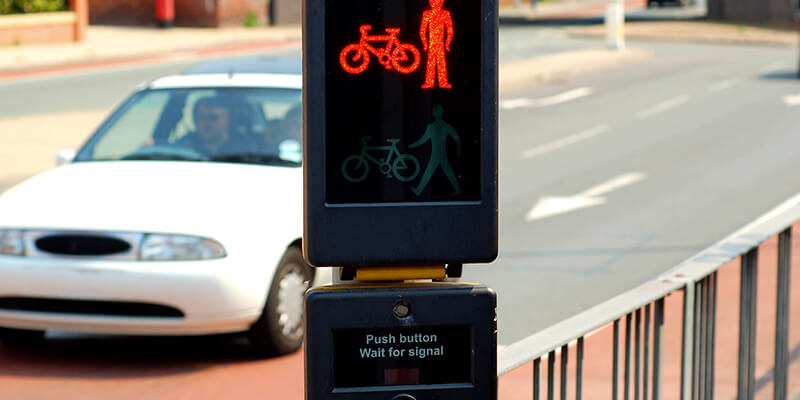A toucan crossing, so called because two-can cross (and the Department for Transport is whimsical), is designed for both pedestrians and cyclists. These are usually found along cycle-ways and unlike other pedestrian crossings, mounted cyclists can legally cross. It follows the same basic principles as the puffin crossing and often has two sets of buttons – one for pedestrians and sometimes another at the correct height for mounted cyclists. Instead of just a red person and green person, the pictograms will also show a bicycle. As multiple streams of traffic can cross the road, a toucan crossing is wider than a puffin or pelican crossing at 4 metres.

How do pedestrians/cyclists cross at a toucan crossing?
Cyclists should come to a stop and push the designated button. Cyclists will sometimes have their own button mounted on a post on the opposite side to the pedestrian button. A red bicycle light will show beside a red person when road traffic has the right of way. When the green person/bike is lit, it is safe to cross. Unlike other crossings, cyclists can stay mounted on their bikes when crossing. To allow for a safe crossing, both cyclists and pedestrians should cross in a straight line and try to avoid crossing paths.
How should drivers approach a toucan crossing?
A toucan crossing may be based on either a pelican or puffin crossing, and drivers should follow the traffic light signals as usual, proceeding when the light is green and the road is clear. They must stop if the light is red and proceed with caution if the light is flashing amber and the road is clear.
